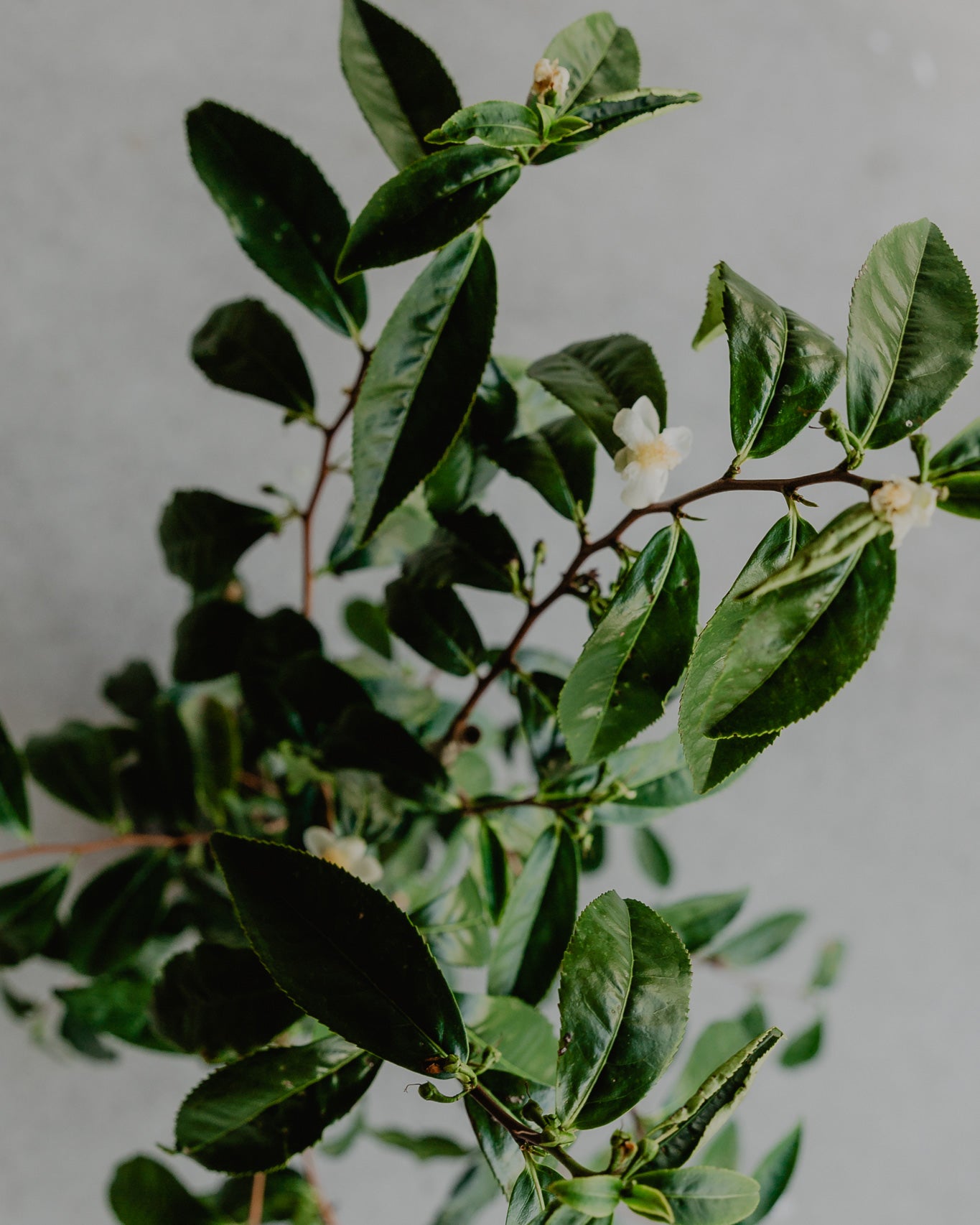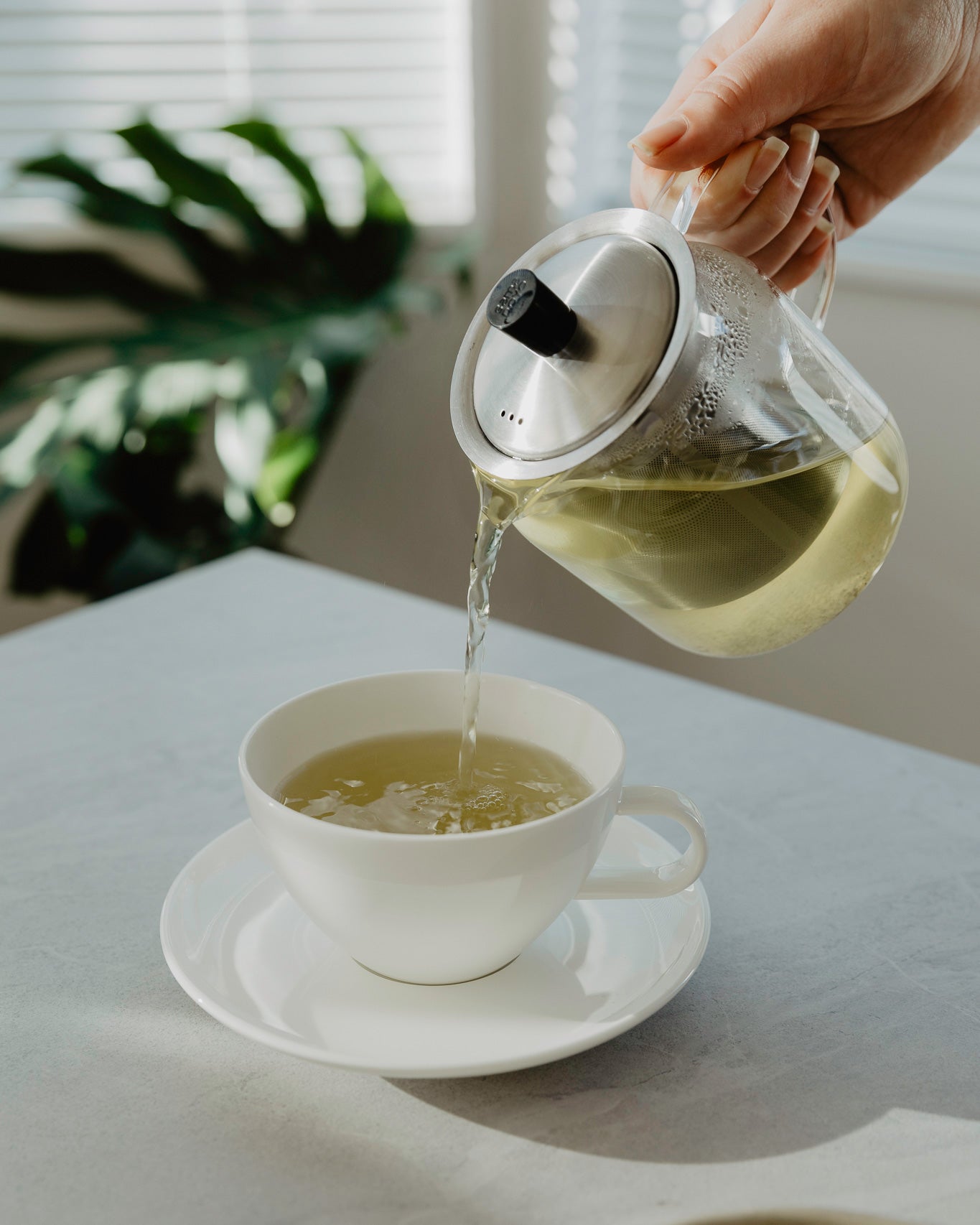Where Does Tea Come From?

Did you know that tea is the second most consumed beverage in the world, second only to water? As self-confessed tea lovers, we appreciate why so many are brewing, steeping, and sipping on tea daily, but we can't help but wonder, where does tea come from?
Whether you are already hopelessly addicted or reasonably new to the extraordinary world of tea, we'd like to offer some intriguing information regarding the origin of tea, how it was discovered, and where you'll find it growing today.
Although many countries are now producing exquisite teas, China, India, Kenya and Sri Lanka are the four central tea regions where you'll find the tea plant (Camellia sinensis) being cultivated.
While most would assume that green, black, white, and oolong tea come from different plants, the surprising truth is that each variety comes from the same plant, the Camellia sinensis plant. The distinction in taste comes from how the tea is prepared after the plant has been harvested.

But let's go back to the beginning, shall we?
The story of tea begins in China. According to legend, tea was first discovered by the Chinese emperor Shennong in 2737 BC. It is said that the emperor preferred his water boiled before drinking it. One day, while a servant was boiling his water, some leaves from a Camellia Sinensis tree blew into his water. Being a renowned herbalist, Shennong decided to try the infusion his servant had accidentally created. After drinking the infusion, it is said that he immediately felt the wonderful impact. Although there are many versions of this legend, there's no doubt its story has changed tea's history forever.

Like all types of plants, different tea varieties thrive in specific climates. Let's take a closer look at the four central growing regions:
China remains the world's largest producer and consumer of tea. The best tea-growing areas are in the southeast, including Zhejiang, Fujian, and Anhui provinces. Delicious tea calls for a particular climate, typically one with high moisture and ambient warmth. These coastal areas, with some featuring mountain ranges, are what consistently produce excellent tea. To experience these teas for yourself, check out our Sencha and Lime Ginger, both sourced from Zhejiang. The black tea in our lovely Earl Grey blend is also sourced from China.
India has three main regions for growing tea, Assam, Darjeeling, and Nilgiri. The tea is cultivated in dense forests, deep mountain valleys, and tall mountain ridges with high altitudes. The full-bodied flavour in our English Breakfast tea is a stunning blend of three black teas, including Darjeeling and Assam sourced from this beautiful part of the world.

Kenya is on the equator, meaning its climate encourages tea to grow well all year round. Kenyan teas are known for their brisk and bright flavour, resulting in a red, coppery tint once brewed. This country specialises in the crush, tear and curl method for production, where the tea leaves pass through a machine to become very finely cut for tea bags. Kenya is also the first place in the world to cultivate purple tea. This rare cultivar is still produced from the Camellia Sinensis plant, yielding a beautiful, vibrant purple leaf that is often described to have a light, clean taste similar to green tea, without any grassiness typical to green tea.
Sri Lanka is best known for its production of Ceylon black tea which you'll find in our full-bodied English Breakfast. Sri Lanka is one of the few countries where each leaf is commonly picked by hand instead of machinery. The gentle, loving care and dedication that goes into growing and harvesting Ceylon tea is what makes it unique. This variety of tea is also one of the most oxidized varieties, meaning that it typically contains more caffeine than other kinds of black tea. Ceylon is loved for its rich, deep colour and flavour with slight citrus overtones.
Now that we've shared a little background of where your tea originates, we hope that it helps you connect to the story of what you consciously choose to sip on? Happy tea drinking to you!
Browse our delicious and colourful range of teas and accessories here.


